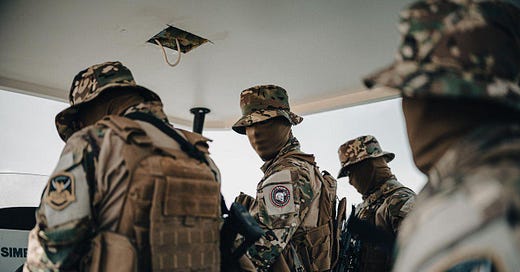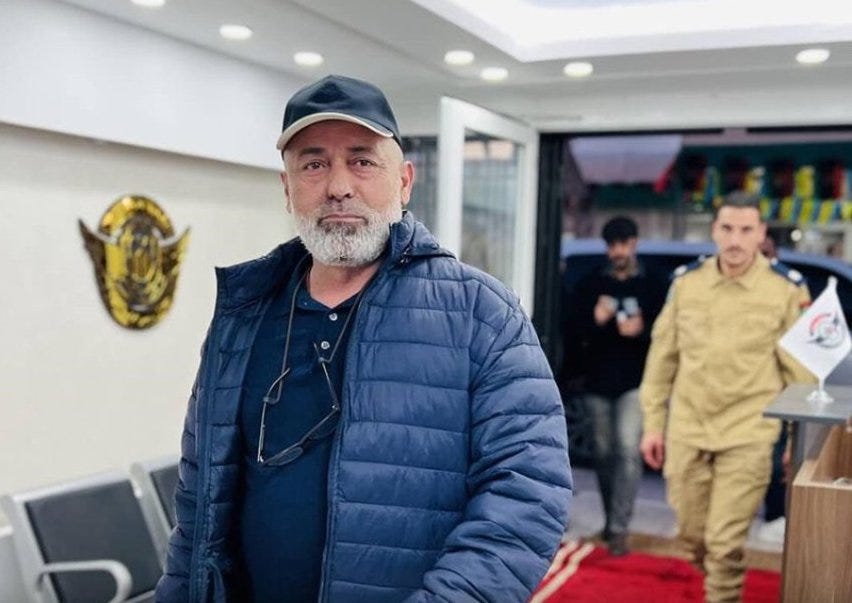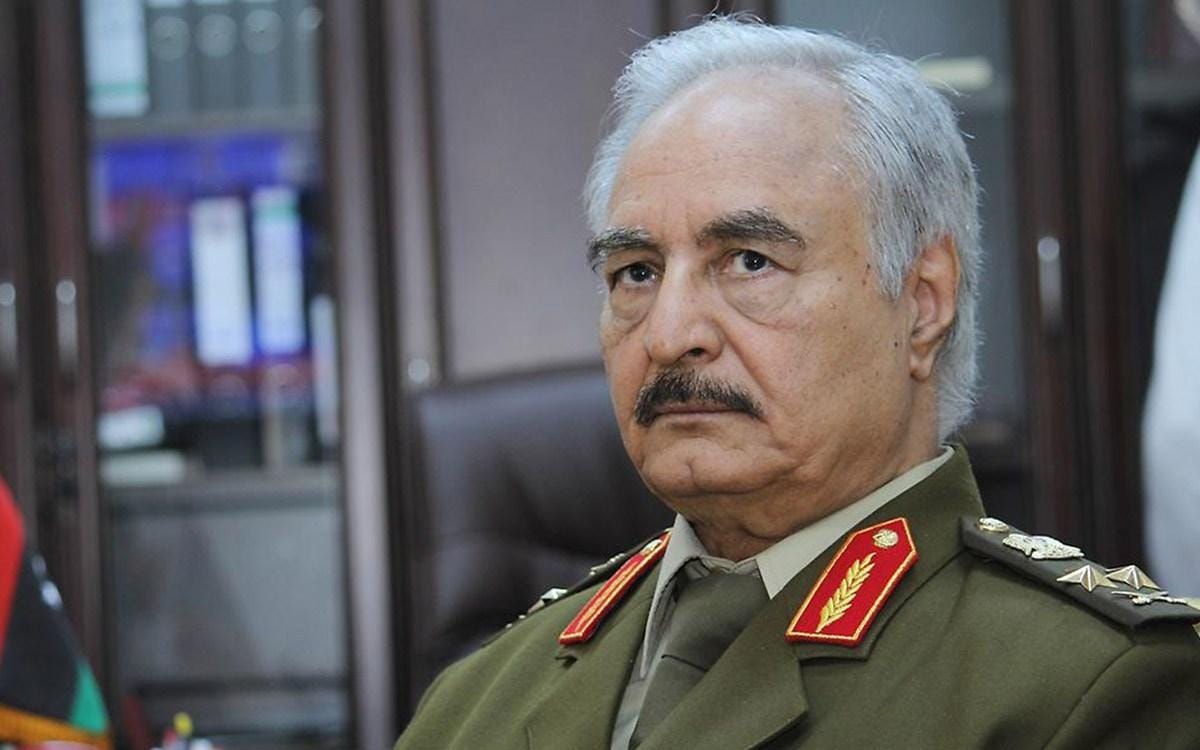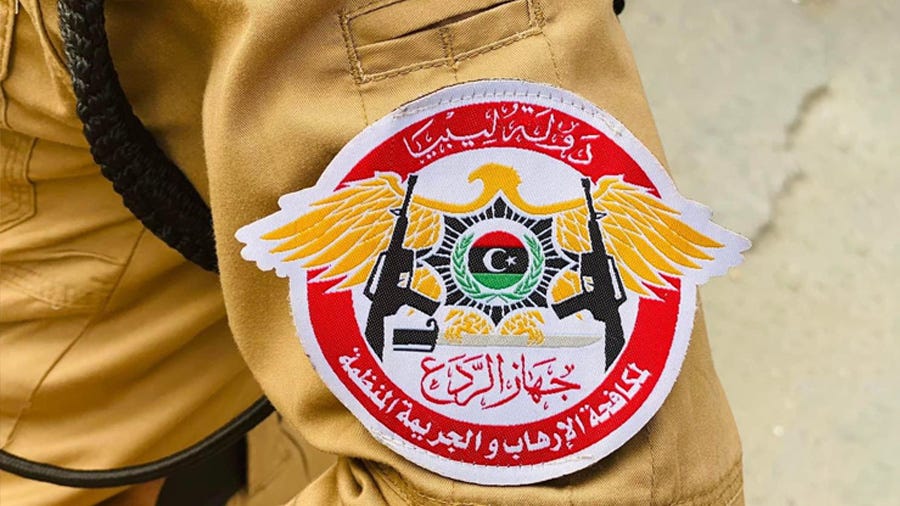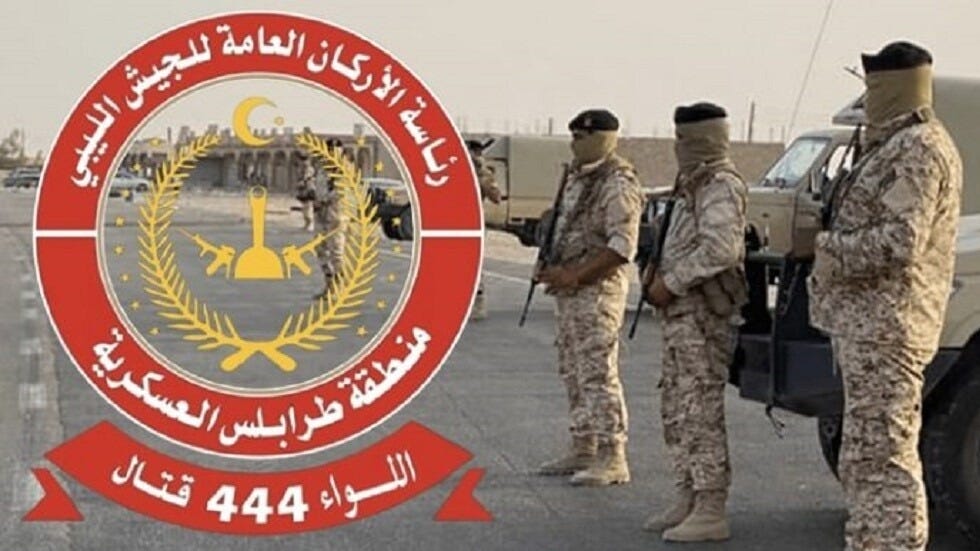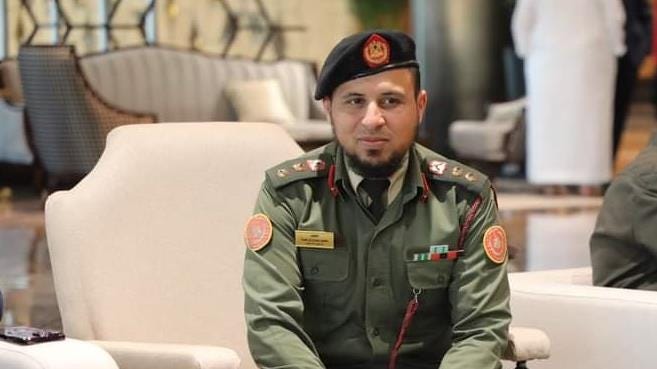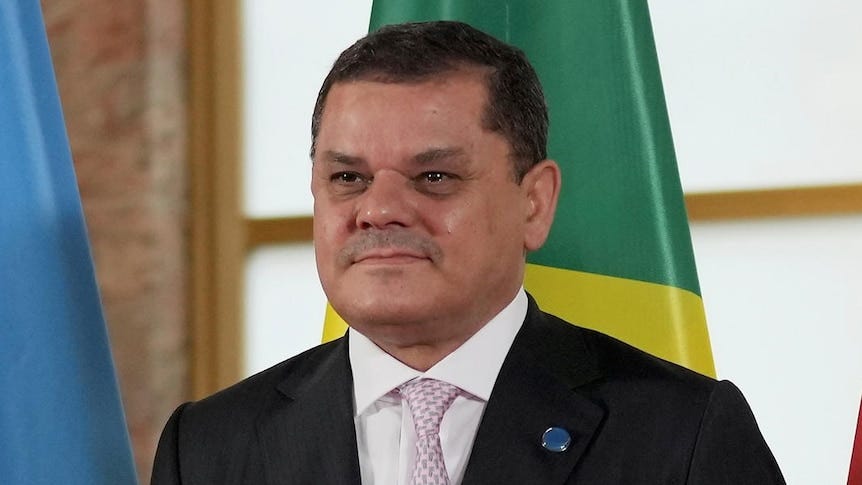May Clashes Transformed Tripoli's Security Landscape as Western Libya Faces Power Consolidation
Dbeibah's forces crushed key rival in May battles while Special Deterrence Force prepares for inevitable government pressure
Bottom Line Up Front
The assassination of Abdul Ghani al-Kikli on May 12, 2025, precipitated the most significant armed confrontations in Tripoli since the 2020 ceasefire agreement. These events fundamentally altered the security architecture of western Libya and strengthened the position of Prime Minister Abdul Hamid Dbeibah's Government of National Unity. The rapid dismantling of the Stability Support Apparatus and subsequent clashes with the Special Deterrence Force represent a critical juncture in Libya's ongoing political fragmentation.
Political and Security Architecture of Libya
Libya remains territorially divided between two competing power centers. The eastern and southern regions, extending from the Egyptian border to Sirte along the Mediterranean coast and southward to the Sudanese and Chadian borders, remain under the control of Field Marshal Khalifa Haftar's forces, commonly referred to as the Libyan National Army. This eastern faction operates under the political authority of the House of Representatives headquartered in Benghazi.
Western Libya operates under the Government of National Unity, established through the Tunis-Geneva Agreement of 2020. This arrangement created a dual executive structure comprising the Presidential Council and the Government of National Unity. The Presidential Council consists of three members representing Libya's historical regions and maintains limited powers including declaring states of emergency, theoretical command of armed forces, overseeing national reconciliation efforts, and representing Libya in international forums. In practice, these powers remain largely ceremonial, encompassing diplomatic functions such as receiving ambassadors and managing diplomatic appointments.
The GNU exercises control through a complex network of allied militias, many of which maintain varying degrees of autonomy from central authority. This fragmented security structure emerged from the post-2011 collapse of state institutions and the subsequent proliferation of local armed groups across western Libya.
Evolution of Armed Groups in Tripoli
The armed faction landscape in Tripoli underwent significant consolidation over recent years. Originally numbering approximately fifty to sixty groups, external forces from cities such as Misrata, Gharyan, and Zintan gradually withdrew to their home territories, leaving a limited number of primary actors controlling the capital.
The Stability Support Apparatus (SSA)
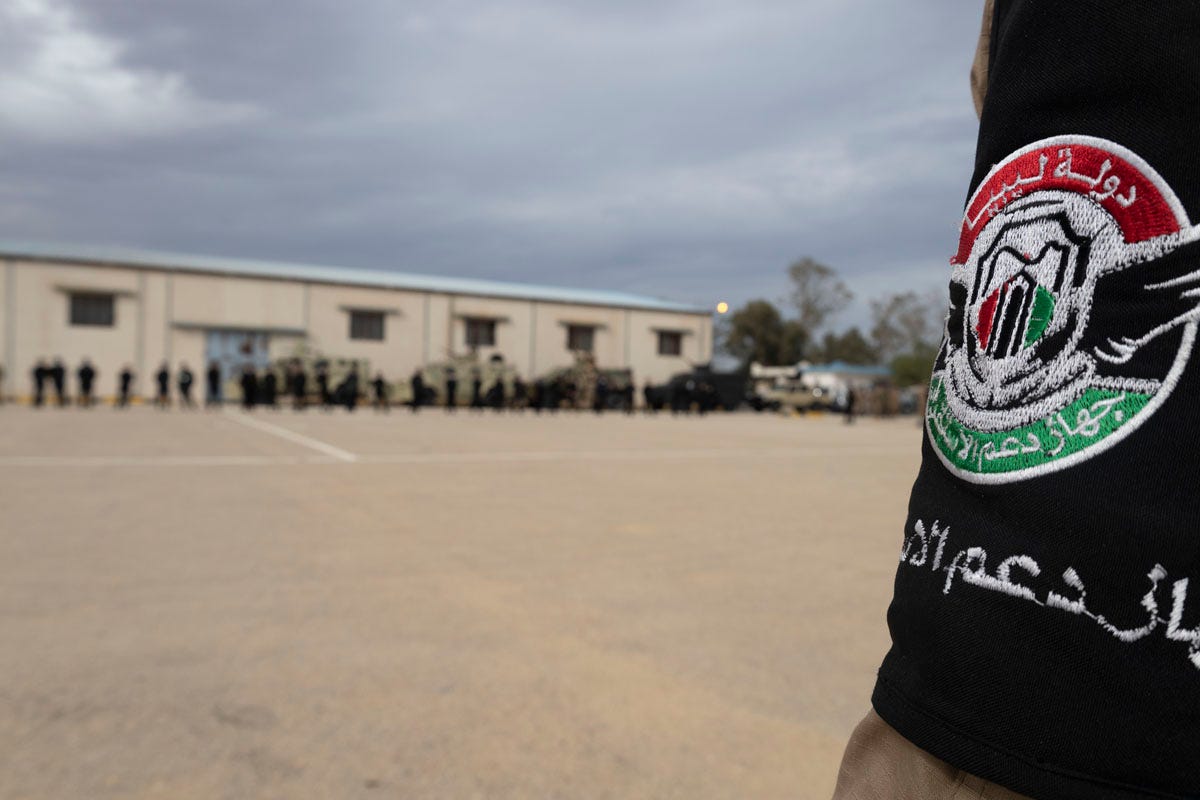
Abdul Ghani al-Kikli emerged as a central figure in Tripoli's security landscape through an unconventional trajectory. Reports indicate he was incarcerated during the February 2011 revolution that toppled Muammar Gaddafi. Upon his release, al-Kikli organized local youth into the Abu Salim Protection Battalion, initially formed to provide neighborhood security amid the collapse of state institutions.
The group expanded rapidly as weapons became widely available from abandoned military installations and opened government depots. Through this growing military capacity, al-Kikli secured control over various state institutions, obtaining funding to further expand his influence. By 2019-2020, under the Government of National Accord led by Fayez al-Sarraj, his organization was formally integrated into state structures as the Stability Support Apparatus under Presidential Council authority.
The SSA controlled extensive territory within Abu Salim, one of Tripoli's largest districts, and extended its influence to cities including Gharyan and Zliten. The apparatus managed sensitive security responsibilities including prison administration, protection of government facilities and ministries, and distribution of public funds from the Central Bank. This broad mandate made al-Kikli effectively "the de facto ruler of Tripoli" in key sectors.
The Special Deterrence Force (SDF)
The Special Deterrence Force, led by Abdul Raouf Kara, represents another major power center in Tripoli. Based at the Al-Ateeqah facility, the SDF controls Mitiga Airport, the capital's only operational airport, and operates a prison housing individuals accused of terrorism and extremism. The force maintains Salafi-Madkhali ideological leanings and, despite nominal affiliation with the Ministry of Interior, operates with considerable autonomy.
The SDF's influence extends throughout western Tripoli, particularly in the Souq al-Jumaa area surrounding its base. Unlike other militias that faced integration or elimination, the Deterrence Force maintained its independent status and decision-making authority under Kara's leadership.
Government-Aligned Forces
Several military units operate under formal Ministry of Defense authority, including the 444th Brigade and 111th Brigade. These formations represent more disciplined military structures with official backing from the GNU. The 444th Brigade, commanded by Mahmoud Hamza, focuses on securing southern Tripoli and combating smuggling operations. Hamza's promotion to Major General and appointment as head of military intelligence in March 2024 reflected the unit's growing importance within government structures.
The 111th Brigade maintains control over parts of central Tripoli and operates under Ministry of Defense command with loyalty to Prime Minister Dbeibah. Additionally, forces from Misrata, including the Joint Force, provide external support to the GNU when required.
Prime Minister Dbeibah currently serves as both head of government and Defense Minister due to the vacant Defense Ministry position, concentrating significant authority over military and security matters.
The May 2025 Crisis: Sequence of Events
The crisis began on the evening of May 12, 2025, during a security meeting at the Tekbali camp southeast of Tripoli. Al-Kikli had been invited to participate in discussions aimed at reducing tensions between armed factions. The meeting deteriorated into violence when guards from opposing groups exchanged fire outside the meeting hall, resulting in al-Kikli's death along with several escorts.
News of the assassination triggered immediate security breakdown across Tripoli. The Ministry of Interior issued instructions for civilians to remain indoors while the University of Tripoli suspended classes and examinations indefinitely. Schools and public institutions closed, and hospitals declared medical emergencies to handle casualties.
By Tuesday morning, May 13, forces affiliated with the Ministry of Defense had seized control of Abu Salim, the SSA's primary stronghold. Prime Minister Dbeibah announced that the military operation demonstrated "the state's ability to protect the homeland and preserve citizens' dignity." The 444th Brigade led the assault on SSA headquarters across Tripoli, achieving rapid tactical success and arresting dozens of apparatus members within hours.
Government forces secured strategic locations including the Port of Tripoli, military camps, and sensitive security sites such as Al-Ruwaimi prison and Department for Combating Illegal Migration facilities. Reports indicated that prisoners escaped from some facilities during the chaos. Video documentation showed military convoys arriving from Misrata and brigades from Zintan, loyal to Interior Minister Emad Trabelsi, moving toward the capital to reinforce government positions.
The conflict expanded significantly on the night of May 13 and morning of May 14, when the SDF under Abdul Raouf Kara engaged directly with the 444th Brigade following the SSA's collapse. Fighting spread to densely populated neighborhoods including Abu Salim, Al-Hadhba Project, and Souq al-Jumaa, characterized by intensive exchanges of gunfire and shelling in residential areas.
Reports indicated that armed groups from Zawiya intervened to support the SDF, expanding the conflict beyond Tripoli's boundaries. This external involvement demonstrated the interconnected nature of western Libya's armed networks and the potential for localized conflicts to escalate regionally.
By Wednesday afternoon, May 14, the Ministry of Defense announced a ceasefire agreement and began deploying "neutral" security forces to sensitive areas. The truce aimed to stabilize the situation and prevent further deterioration. International pressure, particularly from the U.S. and French Embassy, contributed to calls for cessation of hostilities and restoration of peace.
Despite the official ceasefire, witnesses reported intermittent gunfire in some western neighborhoods, indicating incomplete compliance with the agreement. The rapid conclusion of active hostilities suggested that major participants recognized the risks of prolonged conflict to their interests and the broader political settlement.
Conflict Assessment
The May 2025 confrontations resulted in a significant reshaping of Tripoli's power structure. The complete dismantling of the SSA eliminated one of the four major militia leaders in the capital, concentrating influence among the remaining actors. Government forces, primarily the 444th and 111th Brigades supported by Misrata allies, demonstrated superior coordination and external backing.
The SDF emerged as the last major independent faction outside direct government control. This development places the SDF in a precarious position, potentially facing future pressure for integration or dissolution similar to the fate of the SSA.
The successful military operation significantly strengthened Prime Minister Dbeibah's position within western Libya. The elimination of al-Kikli removed a rival power center that maintained extensive economic and security influence potentially challenging full government authority. The rapid neutralization of the SSA demonstrated the government's capacity to project force effectively when unified command structures and external support align.
This consolidation mirrors developments in eastern Libya, where Field Marshal Haftar systematically eliminated or subjugated rival armed groups to concentrate military power under the Libyan National Army. Dbeibah's success in Tripoli suggests a similar trajectory toward centralized security control in western Libya.
This consolidation mirrors developments in eastern Libya, where Field Marshal Haftar systematically eliminated or subjugated rival armed groups to concentrate military power under the Libyan National Army. Dbeibah's success in Tripoli suggests a similar trajectory toward centralized security control in western Libya.
Despite tactical success, several factors complicate long-term stability. The concentration of power may generate resentment among defeated elements, potentially driving them toward covert resistance or alliance with government opponents. The SDF's continued independence represents an ongoing challenge to complete government control.
Public acceptance of increased centralization depends on accompanying improvements in governance and service delivery. Dbeibah's government faces persistent accusations of corruption and electoral obstruction, which could undermine popular support despite military victories over rival militias.
The integration of disbanded militia members into official security structures presents additional challenges. The Ministry of Interior and Ministry of Defense must absorb personnel from dissolved groups while maintaining discipline and loyalty to state institutions rather than personal commanders.
External Dimensions
Turkey, as the primary external backer of western Libyan governments, views Dbeibah's consolidation favorably. Turkish military support proved crucial in repelling Haftar's 2020 assault on Tripoli, and continued backing strengthens Ankara's regional influence through a loyal ally controlling key financial institutions including the Central Bank and National Oil Corporation.
Countries supporting the eastern camp, particularly Egypt and the UAE, may perceive Dbeibah's strengthened position as an obstacle to Haftar's ambitions and their own regional influence. These developments could prompt increased political mediation efforts or additional support to eastern forces to improve their negotiating position against the strengthened Tripoli government.
The crisis may accelerate UN initiatives toward political settlement in Libya. The demonstration of government capacity to control security in Tripoli, combined with international concern about renewed conflict, creates potential opportunities for renewed diplomatic engagement. However, the continued constitutional vacuum and legitimacy questions surrounding Dbeibah's extended mandate complicate international recognition and support.
The demonstration of government capacity to control security in Tripoli, combined with international concern about renewed conflict, creates potential opportunities for renewed diplomatic engagement.
Forecasting Scenarios
Optimistic Scenario: Continued Consolidation
If current efforts succeed in integrating or neutralizing the SDF without renewed violence, Tripoli may achieve greater unity under central authority. This would reduce internal militia competition and create conditions for improved governance and service delivery. Success in this scenario requires:
Negotiated integration of SDF personnel into official structures
Effective absorption of former militia members into state institutions
Improved governance to maintain public support
Progress toward national political dialogue and eventual elections
Pessimistic Scenario: Renewed Conflict
If the SDF resists dissolution or feels existentially threatened, clashes could resume with greater intensity. Factors contributing to this scenario include:
Kara's determination to maintain organizational independence
External support for SDF from regional or ideological allies
Government overreach generating broader resistance
Spillover effects involving militia networks beyond Tripoli
Most Likely Scenario: Managed Transition
The most probable outcome involves negotiated accommodation between the government and remaining independent forces. The SDF may accept reduced authority in exchange for organizational survival, similar to arrangements in other post-conflict environments. This scenario requires:
Face-saving arrangements preserving some SDF autonomy
Gradual integration rather than immediate dissolution
Continued external pressure for political settlement
Economic incentives for cooperation rather than resistance

